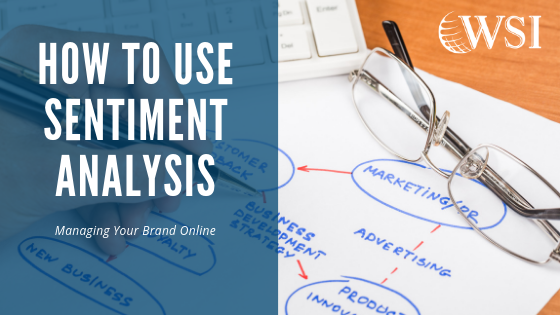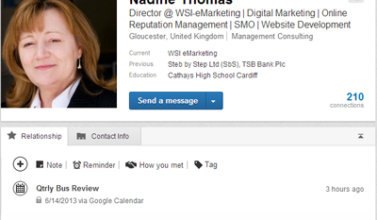
Unlike the human body and mind, data never sleeps. Considering that we generate more than 2.5 quintillion bytes of data daily, sentiment analysis is a hot topic of conversation. It has become an essential tool for businesses to extract invaluable data insights and automate various processes.
Did you know that the number of internet users has grown to over a billion in the last five years? In addition to that staggering fact, more than half the world’s web traffic comes from mobile phones. With all that data out there, how do you make sense of everything, let alone comes up with winning marketing strategies?
For more interesting statistics, here’s a brilliant infographic on ‘How Much Data Is Generated Every Minute’.
What Is Sentiment Analysis?
Sentiment analysis is also referred to as “Opinion Mining” which is actually a field within Natural Language Processing (NLP). It’s essentially an algorithm that is applied to online mentions of your brand, products, and even competitors. This system attempts to identify and extract opinions within text assessing whether comments are positive, neutral or negative.
There are many different types of sentiment analysis and the tools range from focusing on polarity to those that detect feelings and emotions or even identify intentions. In the next section, we will only take a brief look at the most important types.
- Fine-grained sentiment analysis
- Emotion detection
- Aspect-based sentiment analysis
- Intent analysis
- Multi-lingual analysis
For a more detailed overview, check out this article from MonkeyLearn, ‘Sentiment Analysis – Nearly Everything You Need to Know’.
How To Apply Sentiment Analysis
There are various applications of sentiment analysis and it’s extremely useful in social media monitoring among others. It allows companies to get a comprehensive overview of the wider public opinion about certain topics and analyse the data accordingly. In this article, we’ll look at four ways marketers can apply sentiment analysis starting with managing a public relations crisis.
Managing A Public Relations Nightmare
Seeing as sentiment analysis track online mentions in real time, it becomes a priceless tool for identifying a potential PR crisis. For example, a sudden spike in negative sentiment could be the start of something bad and you should remain on top of it. By gaining this insight, you can investigate the situation further and take immediate action to resolve any issues if necessary.
Remember, information spreads very fast social media and negative comments go viral even faster. It’s always in your best interest to handle unhappy customers promptly and professionally as they may share their dissatisfaction across multiple online channels.
Sentiment Analysis Tools
Most social listening tools send notifications of new mentions and allow you to filter results only to show specific sentiments. This functionality helps you prioritise the mentions that you need to address as soon as possible and those that can wait. Thanks to the real-time alerts, you can stay on top of any potential issues and resolve it before becoming a crisis.
Some of the best sentiment analysis tools on the market today include Brand24, OpenText, Social Searcher and Lexylatics among others.
Use Customer Suggestions To Improve Service Level
There is nothing worse than brands blatantly ignoring their consumers’ input as it is a golden opportunity to build brand loyalty. Asking your customers what they like and don’t like about your brand, products, and services is the key to business success. Sentiment analysis allows you to see what people think about your campaigns and products from the beginning to the end.
If people comment about how bad the product’s packaging is, respond accordingly and change it. When countless consumers complain about customer service, make a change and implement addition staff training. Your customers’ input may not always be exactly what you want to hear but it will no doubt help you identify what the people really want.
Monitor Competitors
Along with monitoring your own online mentions, why not use sentiment analysis and keep track of your competitors’ mentions as well? This enables you to see how your brand compares as positive sentiments can help pinpoint where your competitors are successful. At the same time, any negative sentiments can often reveal real opportunities for your brand to step in.
Following your main competitors’ mentions can also help in the following ways:
- If a competitor’s marketing campaign is performing better than yours, examine it properly and identify what you can improve upon.
- Negative sentiments toward a competitor’s product redesign, for example, could open the door for your brand
Get In Touch With Influencers
Another major benefit of sentiment analysis is finding influencers who are talking about your business. Certain sentiment tools will assign an influencer score to online mentions and also allow you to filter mentions in terms of the influencer’s social standing.
Of all the social media platforms, Instagram is the most popular for influencers. You can find the right partner by looking at comments in the positive mentions feed. Before you reach out to any influencers to discuss a mutually beneficial partnership, be sure to vet them properly. The basic requirements include a strong, engaged following with plenty of reactions and real comments on their posts.
Why You Should Track Social Media Mentions
Every mention on social media can either be negative or positive but it always provides an opportunity to engage with your audience. It also gives you the chance to improve or manage your brand’s public perception. Social media mentions are vital to improving customer service standards, customer retention and potential conversions.
Companies that monitor their social media mentions effectively and respond to customers speedily are on the road to success. There is also a greater likelihood that their customers will spend more money on their products.
Related Article: ‘Latest Digital Trends In Marketing’
Conclusion
It’s important to always keep track of your customers’ common questions, concerns and suggestions on social platforms. It allows you to use those insights to manage your product better, create quality content or improve your brand presence. Remember to review customer feedback when social sentiment is down so you can find a way to prevent similar situations in the future.
If you need expert advice on marketing your business, managing your online reputation or understanding sentiment analysis, please get in touch for a free consultation. WSI eMarketing specialises in SEO, PPC, social media management, online reputation management and Marketing Automation among others. You can also join the conversation on Twitter, Facebook, LinkedIn and Pinterest.
Related Post
Content Sharing Via Social...
Target marketing to meet your business goals Is your business using social media channels...
- June 15, 2011
- By Nadine Thomas
- Digital Marketing
Getting the Most from your...
LinkedIn is not only the most popular social network for professionals but with more than...
- November 22, 2012
- By Nadine Thomas
- Linked In
Can you get help to fund your...
If you need a new website, it’s possible that you could get help towards the cost....
- May 30, 2013
- By Rob Thomas
- Digital Marketing
10 Best Ways to take...
Others may have seen a pop-up ‘invitation to upgrade’ message when they accessed...
- June 1, 2013
- By Rob Thomas
- Digital Marketing
Google Hangouts – 6 Ways...
Google+ was launched just 2 years ago in June 2011. In the first 6 months of its...
- June 24, 2013
- By Nadine Thomas
- Digital Marketing
6 top tips on how to get the...
In Europe alone there are 243.2 million Facebook subscribers (internetworldstats, 2012)....
- July 3, 2013
- By Nadine Thomas
- Digital Marketing











Leave a Comments